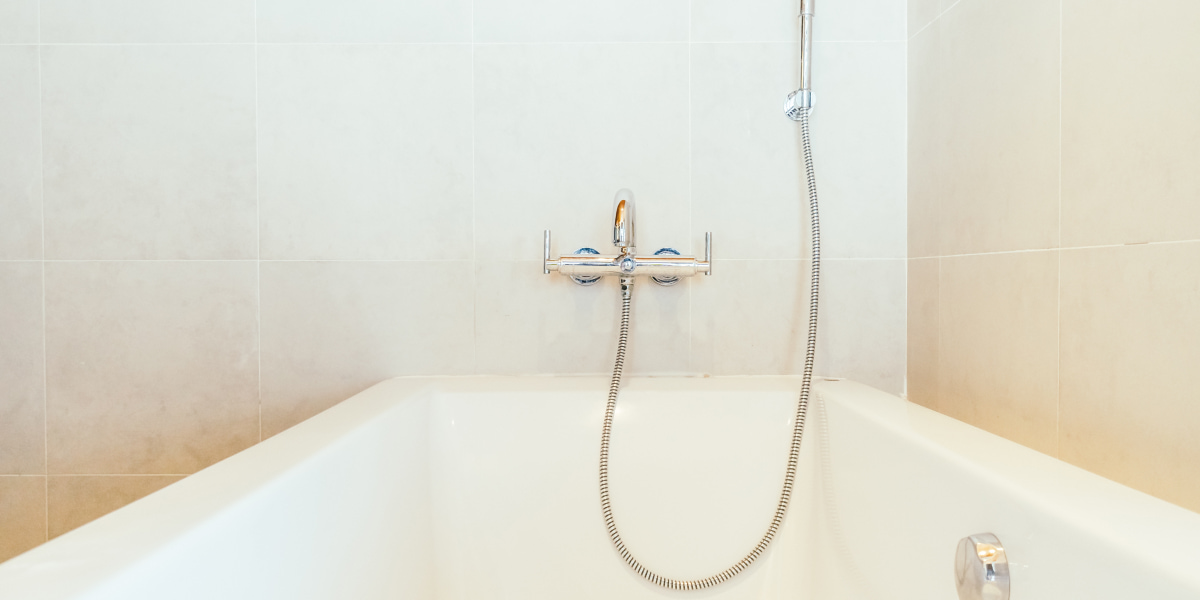Published on October 27th, 2022
Last updated on February 3rd, 2023
How To Caulk Bathtub: Bath Sealing Guide
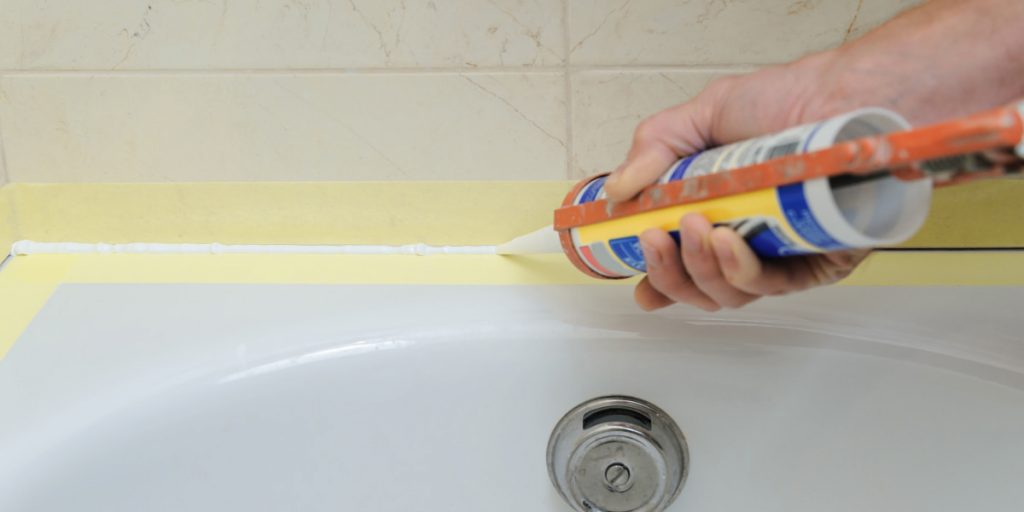
Bathroom sealant can seal the joint between the bathtub and the wall. The instructions for using the sealant are simple. It is enough to apply the product to a degreased and dry surface. In this case, the gap between the bathtub and the wall will be sealed for a long time. The bathroom is one of those rooms in the apartment with high humidity and sharp fluctuations in temperature regimes. Such a unique microclimate with high humidity contributes to the development of mold, fungi, and pathogenic microbes, which adversely affect the general condition and human health.
Therefore, when caulking a bathtub, you must take care in advance about sealing:
- the joints between tiles;
- joints and gaps between the bathroom and wall;
- plumbing.
Also, you must block as much access to moisture formation in places difficult to access, where it can accumulate.
The best protection when finishing building structures today is a sealant for the bathroom. Today, let’s find out which bathroom sealant is better and why.
What are the types of bath sealing?
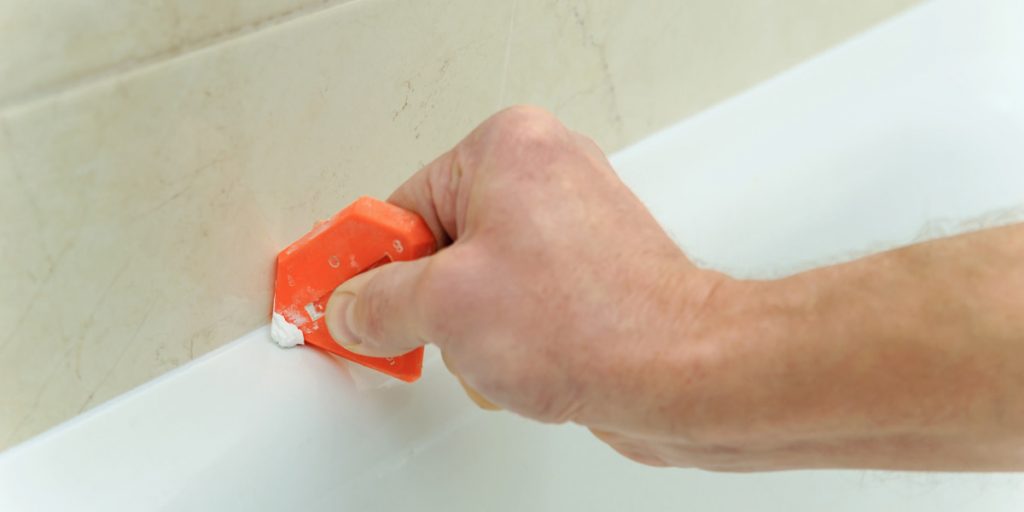
The bathroom is a unique room: constantly high humidity and substantial temperature differences, but this room must always remain clean, hygienic, comfortable, and as beautiful as possible. Accordingly, the materials used to repair the premises must be of the highest quality and resistant to various influences. Recaulking the tub is no exception.
Existing modern sealants are very easy to use. They perfectly protect rooms from dampness, thereby creating a healthy environment.
People most often use coatings on dry surfaces, but there are exceptions. Silicone sealants for caulking around tubs are used on slightly wet surfaces. Let’s start with them.
Silicone Sealant
This is probably the most popular product for caulking a bathtub today. However, it is also one of the most expensive options.
You can use silicone sealant on any coating. It is not affected by moisture and easily withstands the effects of ultraviolet light and temperature fluctuations. In addition, the product is very durable. Therefore, it often uses for finishing bathrooms.
This kind of means for recaulking tub can be divided into two subspecies:
| Acidic or vinegar compounds | They got their name because of the unpleasant smell of vinegar. These sealants are slightly cheaper than the subspecies below, but they are not used on all surfaces. For example, for metal coatings, the use of such compounds can lead to surface oxidation. But acidic sealants work great on ceramic, plastic, and wood products. |
| Neutral silicone sealants | This type of acid-free sealant is ideal for all surfaces, including metal. |
Acrylic Sealant
This sealant, like silicone, will last a long time and can be used on various surfaces. But it tolerates sunlight and withstands large temperature fluctuations. In this case, the product is cheaper than silicone-based variants for bath sealing.
Another essential advantage of the object is safety. Acrylic sealant is odorless, and you can work with it without special protection. This material is easy to apply with a layer of plaster or paint.
The acrylic sealant also has disadvantages. The joint will not be as elastic as when working with silicone. Therefore, if you need to deform seams during work, it is better to prefer the option with silicone.
Since this type of means is used in various conditions, there are also non-water-resistant products. Such acrylic sealant is not suitable for caulking a bathtub. Therefore, you should always read the label carefully.
Polyurethane Sealant
In this case, the main component of the composition is polyurethane. It is a smooth and elastic joint, resistance to various damages, and it is well-suits for most surfaces.
Polyurethane sealant, like acrylic one, can be painted. The components of the sealant release substances that may adversely affect human health. Therefore, you need to protect the skin and respiratory tract when caulking around a tub with it.
Acrylic-Silicone
This is a mixture of the best qualities of the two products. This material can be used as an ordinary sealant and for bath caulking. It is waterproof, durable, resistant to impact, and, of course, elastic. You can use it not only in bathrooms but also for sealing aquariums.
We have looked at the types suitable for bathroom repairs. There is also bitumen, thiokol, and other sealants, but they are not used for bathrooms.
How to do recaulking of the tub with sealant?
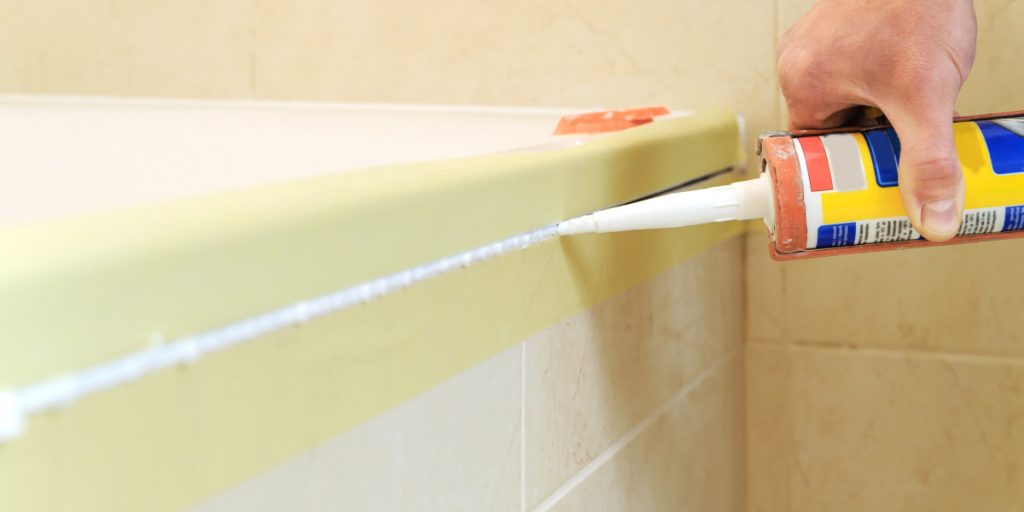
Remember that it is impossible to make this choice at once when choosing which sealant is best for the bathroom. After all, it depends not only on the room but also on purpose.
In the bathroom, sealants are usually used:
- to seal the joints of the shower enclosure and the wall;
- for sealing bath plumbing connections to the wall;
- when covering water and sewer pipes for connecting to the water supply;
- on the mirrors and bathroom furniture.
So, the container with the sealant may already have a special “spout” for even distribution and can be without it. Then you need to buy a gun for application additionally.
In addition to the gun, you can find pipe fixtures that allow you to apply sealant and align it simultaneously.
Also, you need to prepare other materials and tools for caulking a bathtub. What do you need to caulk a bathtub:
- Clean white cloth;
- Soft solvent – lacquer remover, acetone, or alcohol;
- A narrow silicone spatula;
- Paper tape;
- Skin and respiratory protection;
- Work clothes.
After preparation, you can start working with the bath sealing.
Once we understand what we need, we need to build an order of actions:
- First, clean the surface with a soft cloth and remove the old sealant (if you have it), and apply the solvent. For a nice and smooth joint along the surface, glue paper tape. This is not a necessary part of the job, but thanks to the tape, you will also protect yourself from having to clean the surface after the job.
- Next, you should prepare the sealant itself. First, cut the tip of the tube at a 45-degree angle, then install the nozzle or gun.
- Press gently on the bottle when caulking around the tub with the sealant so that the seam is continuous and even. Otherwise, voids may appear in the seam, filling with water and dirt over time.
- The seam should be smoothed with a silicone spatula. After that, curved lines can also be corrected.
- When you finish the work, the sealant should dry, after which you need to ventilate the room by opening the door.
A distinction is made between curing time and the time it takes for the product to dry. The first indicates when the agent will begin to cure on top. The second marker indicates the final result of bath sealing.
We have broken down the order of work when applying a new joint, but there are times when you need to renew old joints.
How to choose the proper product for bath sealing?
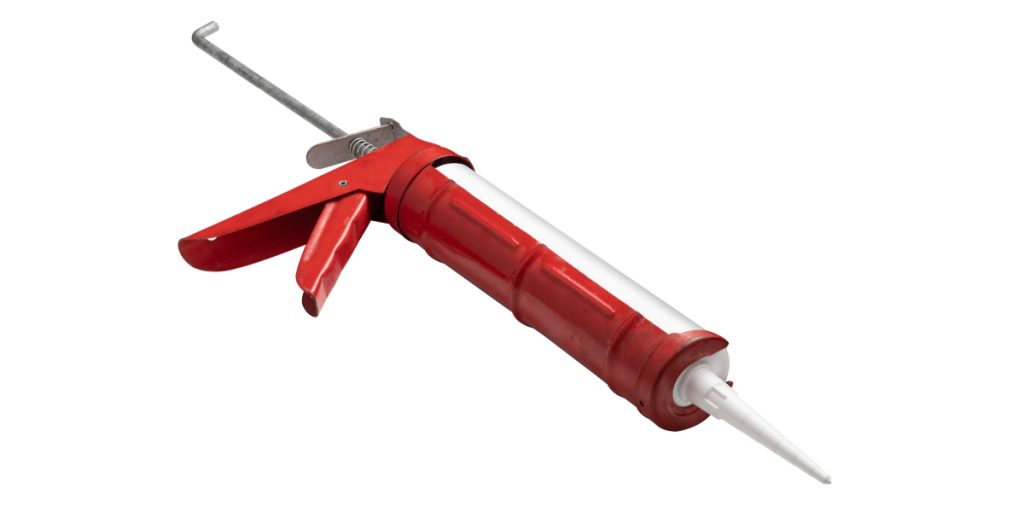
Of course, preferences in terms of manufacturers are up to you. We’ll just list some basic tips for choosing a quality sealant that will last in bathrooms.
Tips:
- The first thing to note when deciding on a bath product is that the sealant should have mold-resistant properties.
- Silicone products are famous for excellent performance, so if the budget allows, pick them for the caulking around the tub. They are easy to work with, even for beginners. They are versatile and can seal seams and joints with walls and pipes. They can also be used when renovating old seams.
- Remember, when choosing a silicone sealant, you must consider where you will be using it. For metalwork and bathtubs, select acid-free products.
- If you are unsure of the brand or are new to it, study the composition and user reviews of bath sealing.
- Take into account the possibility of fakes. Be sure to read whether the brand is spelled correctly and whether the packaging has all the information about the work with the product, its purpose, and precautions.
Bottom Line
There are various sealants that work in areas with high humidity and temperature fluctuations that are widely popular for domestic use, sealing plumbing fixtures, and caulking a bathtub. With the help of these means, you can perfectly protect the inner volume of the bathroom from fungus, black mold, rot, and harmful bacteria. The modern market offers great sealants.
These quality materials with high levels of adhesion, good plasticity, safety, and water resistance can be used for seams and joints in the bathroom.
FAQ
How do I remove the old silicone before caulking around the tub?
Initially, you should try to cut off the old sealant with a knife and its remains on the tile’s surface to wet a rag with white spirit. The silicone sealant will soften in thirty seconds and take on a gelatinous state. After that, it can be cleaned off with an ordinary razor blade.
What is the best way to caulk the gap between the tub and the tile?
It is possible to do this with the help of silicone sealant. The method is used for small gaps. It is better to use sanitary sealant to prevent mold from appearing in the seam area over time. Silicone should be applied to the cleaned, degreased surfaces of the edge of the bath and tile, using a trowel to give the correct shape to the seam.
How to update the joint between the bathtub and the wall?
One suitable method can be the installation of foam. First, prepare the workplace: clean the walls and the sides of the bathtub, and degrease. Shake the can, then put it in the gun. Pour the foam quickly and gently into the joint and leave it to dry.
Is it dangerous to work with bath sealing?
Yes, sealants are not safe for human health. They can cause dizziness or headaches if they evaporate and concentrate vapors in the airspace of the work area. Rubber gloves should be worn when working to prevent skin damage. If the sealant accidentally gets into your eyes or nose, rinse immediately with warm water.


